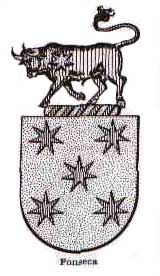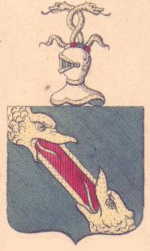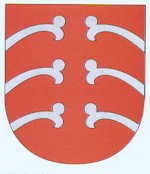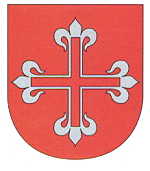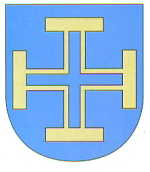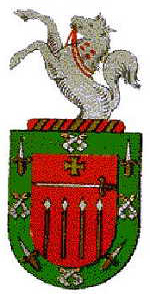Reference:
Pembley’s Dictionary of Hereldry
Illustrations provided by Jorge Arez Da Silva of Portugal.
(My thanks to Jorge for permission to reproduce the above prints).
Arms were so called because they were originally displayed upon defensive arms, and coats of arms because they were formerly embroidered upon the surcoat or camis worn over the armor.
The term coat of arms, once introduced, was afterward retained, even when displayed elsewhere than on the coat. In the days when knights were so encased in armor that no means of identifying them was left, the practice was introduced of painting their insignia of honor on their shield as an easy method of distinguishing them. Although originally armorial bearings were embroidered on the surcoat of the wearer, the term is now used for the escutcheon, or shield, when arms are displayed.
Originally these were granted only to individuals, but were afterward made hereditary. Surprisingly few people who use a coat of arms and crest today have any actual right to do so.
Armorial bearings do not appertain to all persons of a given surname but belong to and identify members of one particular family.
Coats of arms and crests are a form of property and may rightfully be used only by the male-line descendants of the individual to whom they were first granted or allowed. Such grants were and are made by the appropriate heraldic authority acting under the sovereign.
The coats of arms we study in this page are of the original noble families of these names in ancient Portugal.
During the Portuguese occupation of Ceylon, the native people who converted to Christianity adopted or were bestowed names of Portuguese Origin ( see ‘The de Fonseka Surname’ ). The original Coats of Arms of these family names were never known or adopted.
In this page we look at some of the family Coast of Arms of these original families in Portugal. The use of the family names of Fonseca, Andrade, Mello and Taxeira (Tissera) has been covered extensively in the Ancestry page. Additional names of Portuguese origin popular in Sri Lanka today, such as Pereira, Costa, Cabral and Almeida have also been included.
Reference:
Pembley’s Dictionary of Hereldry
Illustrations provided by Jorge Arez Da Silva of Portugal.
(My thanks to Jorge for permission to reproduce the above prints).
